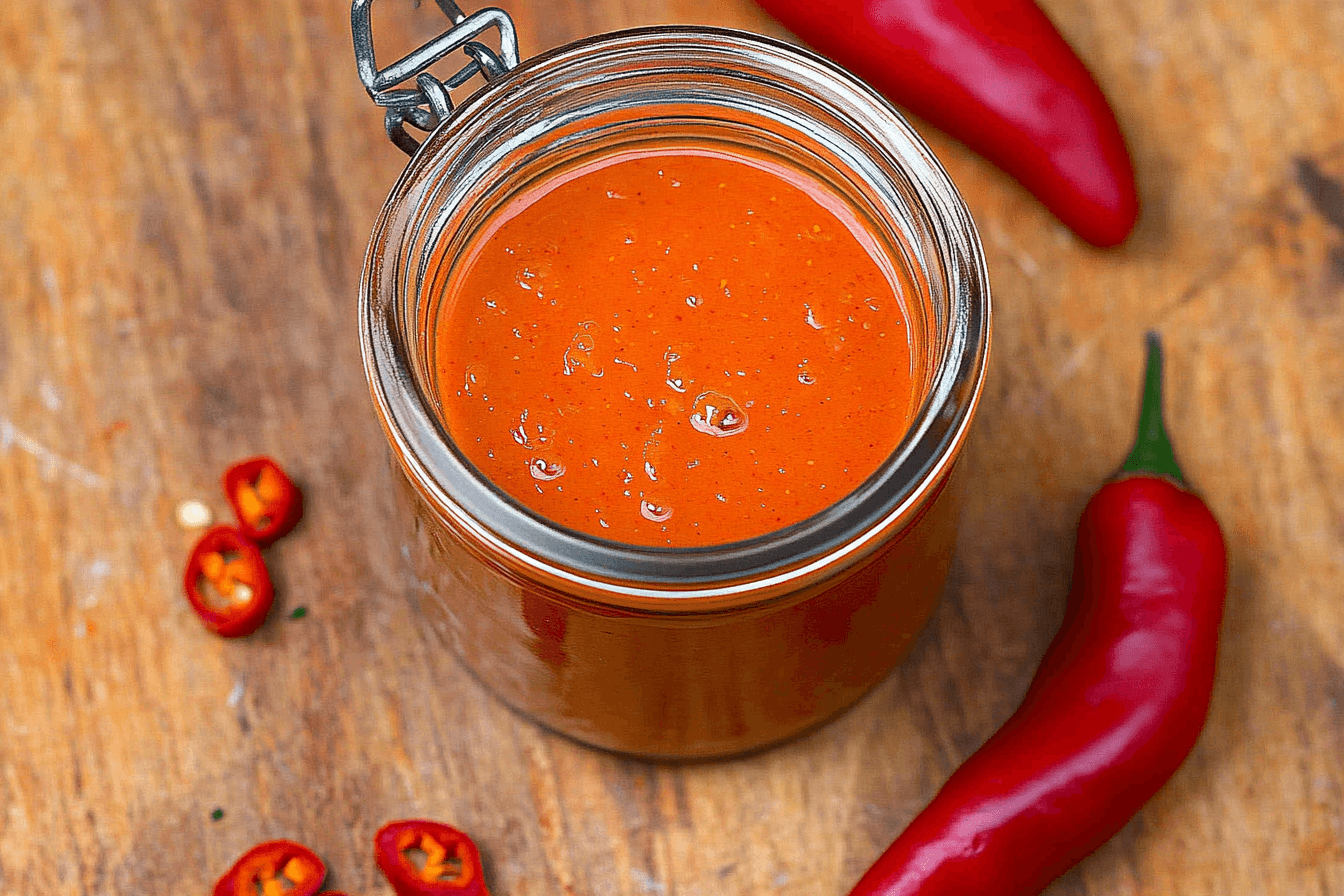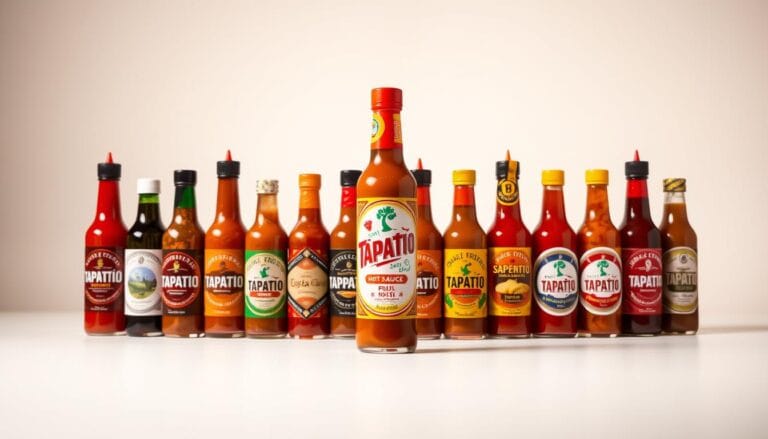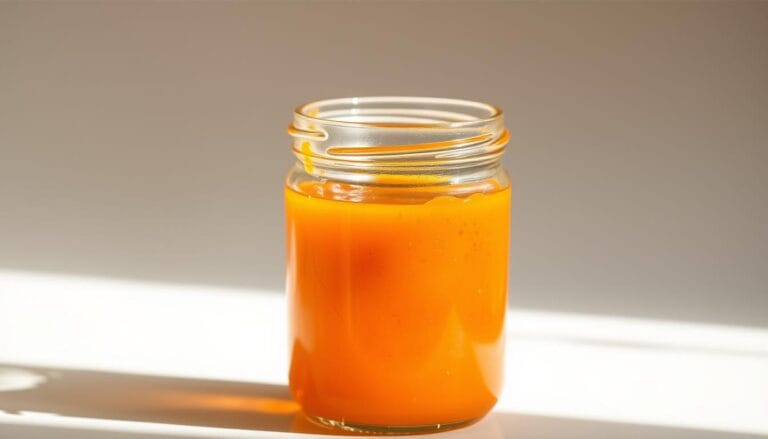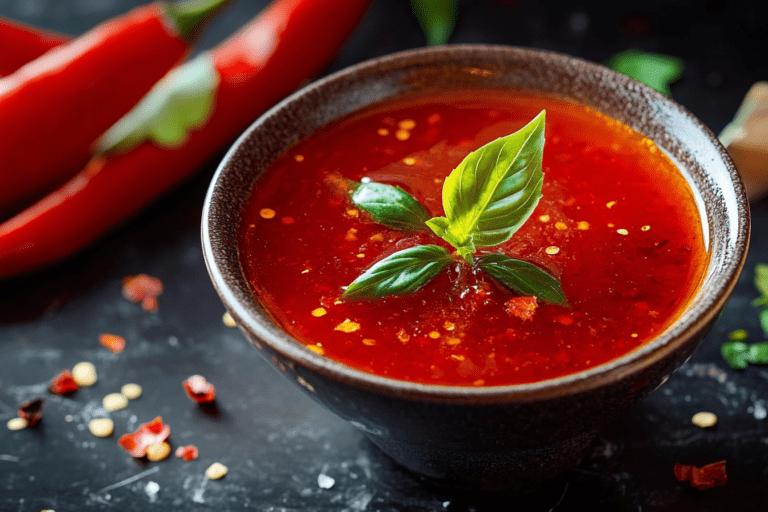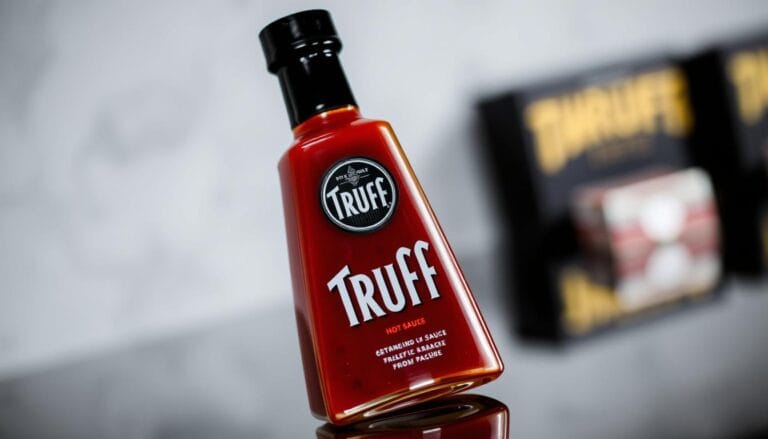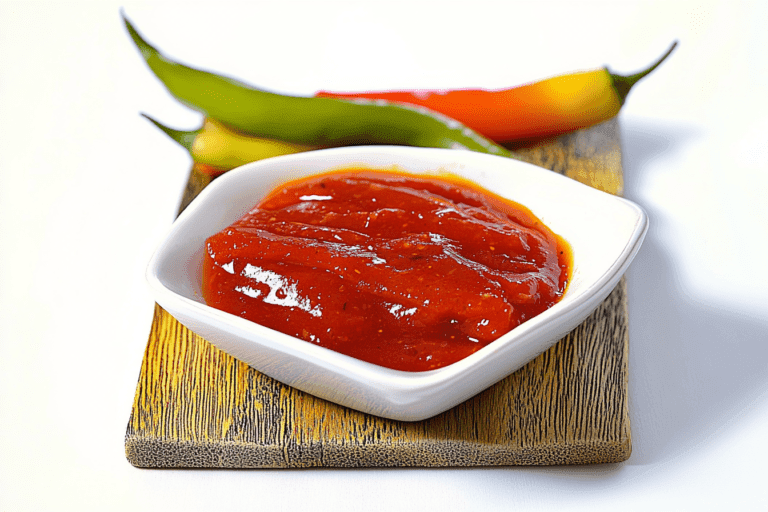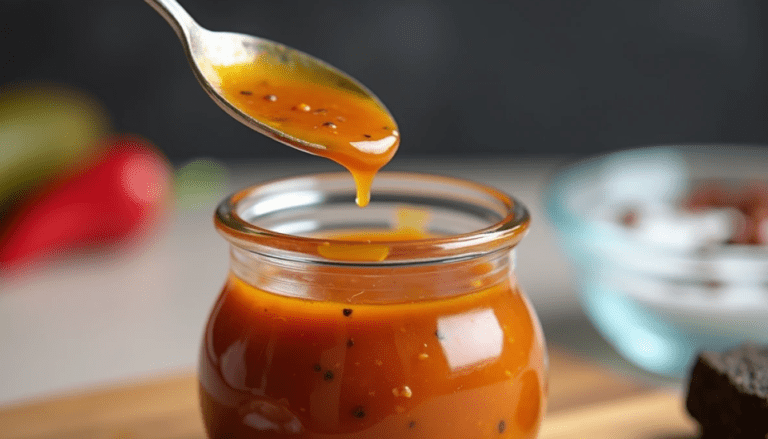Exploring Hot Sauce in Mexico: The Essential Guide
The first time I tasted authentic Mexican hot sauce, my world changed. That flavor was complex, vibrant, and fiery. It was more than a condiment; it was a journey through generations of cooking.
Mexican hot sauce brands tell stories of families and regions. They go from mild Cholula to intense El Yucateco Red Habanero Sauce. Each drop is a piece of culinary art.
Whether you love spice or are just starting, learning about Mexican hot sauce is exciting. This guide will show you Mexico’s most iconic hot sauces. It’s a journey of flavors.
Key Takeaways
- Mexican hot sauces offer diverse flavor profiles beyond simple heat
- Each region in Mexico has unique hot sauce traditions
- Understanding Scoville ratings helps choose the right sauce
- Hot sauces are integral to Mexican culinary culture
- Experimenting with different brands can transform your meals
The Rich History of Hot Sauce in Mexico
Explore the rich history of Mexican hot sauce, a tradition that goes back thousands of years. These sauces have been a key part of Mexican food since ancient times. They come from the Aztecs and Mayans, two remarkable civilizations.
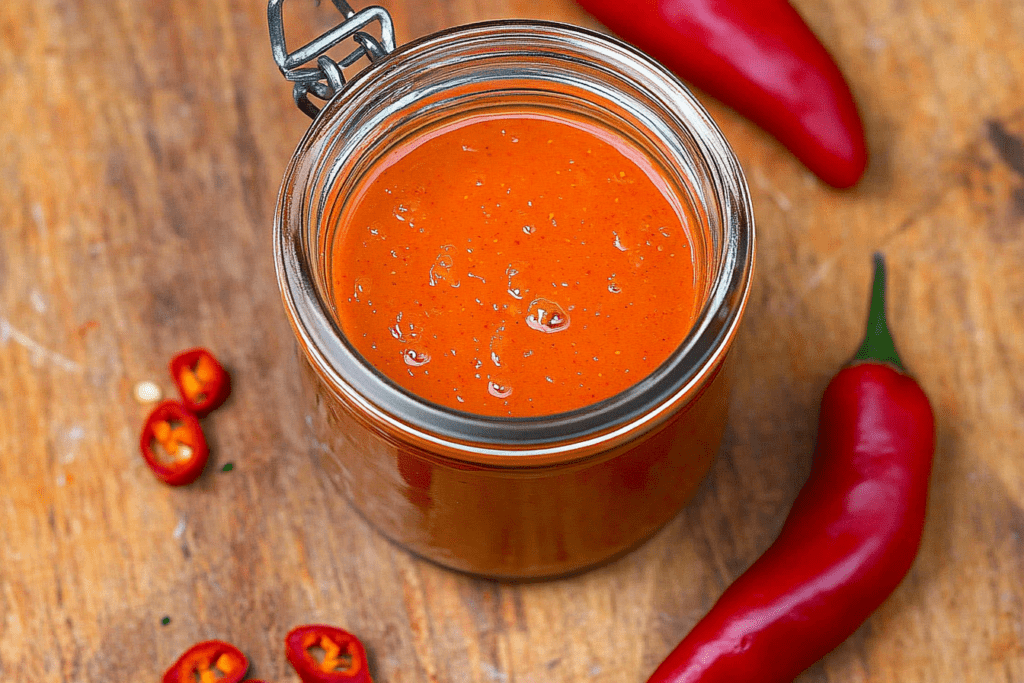
The tale of Mexican hot sauce is a journey through time, taste, and culture. Chili peppers have been grown in Mexico for over 9,000 years. They are a basic ingredient in the country’s food.
Overview of Traditional Mexican Cuisine
Traditional Mexican cuisine is not complete without its vibrant hot sauces. These spicy condiments do more than just add flavor. They are a way to express culture. Here are some key traits of traditional Mexican hot sauce:
- Made from locally grown chili peppers
- Often prepared using ancient techniques
- Reflects regional culinary traditions
- Varies in heat and flavor profile
Role of Hot Sauce in Cultural Traditions
Hot sauce is deeply rooted in Mexican culture. It’s not just a condiment but a symbol of heritage and identity. Families often keep secret hot sauce recipes passed down through generations.
“In Mexico, hot sauce is more than food – it’s a way of life.” – Traditional Mexican Saying
Evolution of Hot Sauces Over Time
The evolution of Mexican hot sauce is a story of culinary innovation. From pre-Hispanic times to today, these sauces have changed and grown.
| Era | Key Development |
|---|---|
| Pre-Hispanic | Initial chili pepper cultivation |
| 16th Century | Introduction of European ingredients |
| 19th Century | First commercial hot sauce production |
| Modern Era | Global popularity and innovation |
Today, Mexico has about 1,500 varieties of chili peppers. This shows the amazing diversity that inspires hot sauce makers all over the world.
Popular Types of Hot Sauces in Mexico
Mexican hot sauces add excitement to meals with their diverse flavors. They range from mild to fiery, playing a key role in Mexican cuisine. Let’s dive into the top Mexican hot sauce varieties that showcase authentic Mexican flavors.
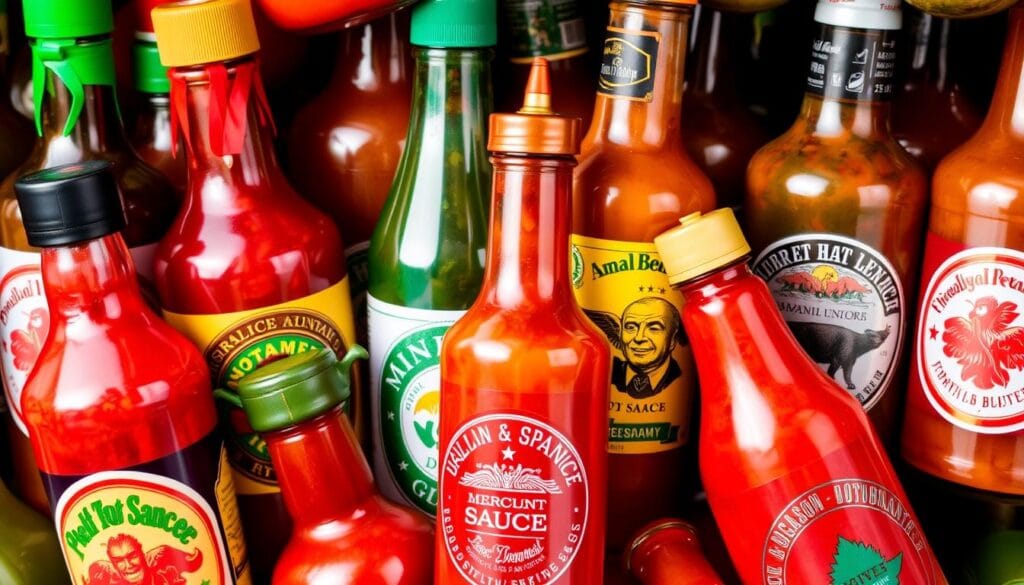
Each Mexican region has its own hot sauce style, reflecting local traditions and ingredients. This variety ensures there’s a sauce for every taste and dish.
Salsa Verde: A Tangy Green Delight
Salsa Verde is a favorite among hot sauce lovers. It’s made from green tomatillos and chili peppers. This sauce has a bright, zesty taste that goes well with many dishes.
- Primary ingredients: Tomatillos, green chilies
- Flavor profile: Tangy and slightly spicy
- Best used with: Tacos, enchiladas, grilled meats
Salsa Roja: The Classic Red Sauce
Salsa Roja is the quintessential Mexican hot sauce. This red sauce uses ripe tomatoes and chili peppers. It has a rich, robust flavor that’s at the heart of Mexican cuisine.
| Hot Sauce Brand | Heat Level | Flavor Characteristics |
|---|---|---|
| Cholula | Mild | Balanced, deep chile flavor |
| El Yucateco | Medium | Strong habanero notes |
| Valentina | Mild to Medium | Thick, less vinegary |
Mole Hot Sauce: A Unique Culinary Experience
Mole hot sauce is the peak of Mexican culinary art. This complex sauce mixes chili peppers, chocolate, and spices. It offers an extraordinary taste that tells a story of cultural richness.
“Mole is not just a sauce, it’s a celebration of Mexican culinary heritage.”
Whether you’re new to spice or love a fiery kick, these Mexican hot sauces have something for you. Explore, taste, and enjoy the vibrant world of Mexican hot sauces!
Regions Famous for Hot Sauces in Mexico
Mexico’s food scene is full of flavors, with each area adding its own twist. The country has seven main food regions. Each one offers unique spicy sauces that show off local tastes, traditions, and culture.
When you dive into Mexican hot sauces, you find a wide range of tastes and heat levels. From the coast to the mountains, every place has its own special sauce.
The Spicy Traditions of Oaxaca
Oaxaca is a big name in Mexican food, known for its mole sauces and hot sauces. These sauces often use special ingredients like:
- Local chilies found only there
- Indigenous ingredients, even insects
- Special herb mixes
Yucatán Peninsula’s Fiery Flavors
The Yucatán is famous for its hot sauces made with habaneros. These sauces are very spicy and full of flavor. They usually have:
- Bright orange habanero peppers
- Citrus notes
- Very strong heat
Other Notable Spicy Regions
Other than Oaxaca and Yucatán, many areas in Mexico make great hot sauces:
| Region | Hot Sauce Characteristics |
|---|---|
| Sinaloa | Seafood-inspired spicy sauces |
| Jalisco | Rich, complex chili blends |
| Gulf Coast | Shellfish-influenced hot sauces |
“In Mexico, a meal without chili is like a day without sunshine.”
Every region’s hot sauce has its own story. It’s about local ingredients, cooking methods, and traditions. Whether you’re looking at sauces from the coast or inland, there’s a world of taste to explore.
Key Ingredients in Mexican Hot Sauce
To make a real hot mexican sauce, you need to know the main parts. These parts add flavor and heat to your food. Each one is important for the sauce’s taste.
Peppers: The Heart of the Heat
Chili peppers are the base of any hot mexican sauce. The type of pepper decides how hot and tasty the sauce is. Here are some important peppers:
- Habanero: Very hot (100,000-325,000 Scoville Heat Units)
- Jalapeño: Not too hot (2,500-5,000 Scoville Heat Units)
- Chipotle: Has a smoky taste and medium heat
Vinegar’s Role in Flavor and Preservation
Vinegar is key in your hot mexican sauce. Apple cider vinegar adds a tangy taste, softens chiles, and keeps the sauce fresh.
| Vinegar Type | Purpose in Hot Sauce |
|---|---|
| Apple Cider Vinegar | Adds tanginess, preserves sauce |
| White Vinegar | Provides sharp acidity |
| Sour Orange Vinegar | Enhances marinade flavors |
Additional Ingredients That Pack a Punch
Other ingredients make a simple hot sauce special:
- Garlic: Adds depth and aroma
- Onions: Adds sweetness and complexity
- Tomatoes: Adds volume and richness
- Salt: Balances and enhances flavor
“The magic of a hot mexican sauce recipe lies not just in its heat, but in its harmonious blend of ingredients.” – Mexican Culinary Expert
Knowing these key ingredients helps you make a hot sauce that’s true to Mexican flavors.
How to Choose the Right Hot Sauce
Exploring the world of best mexican hot sauce is a thrilling journey. With so many choices, picking the right hot sauce is key. It can make your meals even better.
Understanding Heat Levels
The Scoville scale helps measure pepper heat. Each hot sauce has its own heat level:
- Mild sauces (500-2,500 SHU): Great for beginners
- Medium sauces (2,500-30,000 SHU): Good for most people
- Hot sauces (30,000-50,000 SHU): For those who love spice
- Extreme heat sauces (50,000+ SHU): For the bravest
Balancing Flavor and Heat
Choosing the best mexican hot sauce is more than just heat. Flavor complexity is just as important. Brands like Cholula mix árbol and piquín peppers for a perfect taste.
“A great hot sauce should enhance your meal, not overpower it.”
Decoding Labels and Ingredients
When picking a hot sauce, check the ingredients. Look for:
- Natural ingredients
- Minimal preservatives
- Authentic Mexican spices
- Transparent sourcing
Brands like El Yucateco have many flavors. This means you can find a sauce that fits your taste and heat level.
How to Use Hot Sauce in Your Cooking
Discover the magic of Mexican hot sauce recipes. They can turn simple meals into special dining moments. Hot sauces are more than just condiments. They are powerful flavor boosters that can take your cooking to the next level.
- Marinate meats for deep, penetrating flavor
- Create zesty salad dressings
- Enhance soups and stews
- Develop unique glazes for grilling
- Craft spicy cocktail mixers
Enhancing Dishes with the Right Sauce
Choosing the right mexican hot sauce recipe is key. It’s all about understanding flavor profiles. Different hot sauces have unique qualities:
- Vinegar-based sauces: Sharp and tangy
- Fruity sauces: Sweet with moderate heat
- Smoky sauces: Rich, complex flavors
Pairing Hot Sauce with Different Foods
Each dish can be enhanced by the right hot sauce. Here are some pairing ideas:
- Tacos: Salsa verde or chipotle sauce
- Eggs: Habanero-based hot sauce
- Pizza: Mild, tomato-based hot sauce
- Seafood: Citrus-infused hot sauce
Creative Recipes Using Hot Sauce
“A few drops of hot sauce can transform an ordinary meal into an extraordinary culinary adventure.”
Try these creative mexican hot sauce recipe ideas:
- Spicy marinade for grilled chicken
- Hot sauce-infused salsa
- Fiery cocktail dipping sauces
- Zesty vegetable pickles
Remember, the secret to mastering hot sauce is balance. Start with a little and add more to taste.
The Growing Popularity of Mexican Hot Sauce in the U.S.
Mexican hot sauce brands are becoming more popular in the U.S. The market is growing fast. It’s expected to hit nearly USD 3.03 billion by 2024.
Emerging Consumer Trends
American shoppers are looking for real and tasty Mexican hot sauces. They want regional flavors. This has led to big growth in the market.
- Growing interest in artisanal and craft hot sauces
- Rising popularity of online retail channels
- Increased consumption in fast-casual dining
Influential Mexican Hot Sauce Brands
Some Mexican hot sauce brands are making waves in the U.S. Cholula, Tapatio, and Valentina are well-known. They stand out with their unique tastes and true recipes.
Food Media’s Role in Awareness
Food blogs, cooking shows, and influencers have helped popularize Mexican hot sauces. They’ve turned hot sauce into a big trend in cooking.
“Mexican hot sauces are no longer just a condiment—they’re a cultural experience.” – Food Trends Magazine
By 2024, North America will hold 44.24% of the market. This shows a bright future for Mexican hot sauce brands.
Hot Sauce Competitions and Festivals
Hot sauce fans from all over come together to celebrate their love for the best mexican hot sauce. They do this at exciting festivals and competitions. These events are cultural highlights that show off creativity, flavor, and new ideas in cooking.
The world of hot sauce competitions is full of life and variety. It offers fans a chance to try amazing flavors. From small local events to big national ones, these festivals unite passionate makers and spice lovers.
Overview of Popular Events
- Nevermore Hot Festival at Peabody Heights
- Hell’s Kitchen Hot Sauce Competition
- Regional Mexican Hot Sauce Showcases
Notable Competitions to Explore
Hot sauce competitions have strict judging to check flavor, heat, and taste. Contestants compete in different areas, with awards for the most creative mexican hot sauce.
“The hot sauce industry is about celebrating flavors, not just extreme heat” – Mike Drew, Hot Sauce Expert
Festival Culture and Community
These events are more than just competitions. They build connections between hot sauce makers, fans, and buyers. Visitors can try about 40 different hot sauces, learn how they’re made, and find out about special pepper types.
- Sampling of unique sauce varieties
- Meeting artisan hot sauce creators
- Learning about pepper cultivation
Whether you’re just a fan or a serious collector, hot sauce festivals are an immersive experience into the spicy world.
Health Benefits and Risks of Hot Sauce
Exploring hot mexican sauce recipes shows more than just taste. The link between spicy foods and health is complex. Many studies have found both benefits and risks.
Capsaicin, found in hot peppers, has amazing health benefits. Studies reveal some surprising facts about spicy foods:
- A 2015 BMJ study found daily spicy food consumers have a 14% lower risk of death
- Adults eating hot red chili peppers monthly for 20 years had a 13% lower mortality rate
- Some studies suggest capsaicin may reduce arthritis discomfort by 50%
Potential Health Benefits of Peppers
Hot mexican sauce recipes add more than flavor. They also boost your health. Capsaicin is linked to several benefits:
- Metabolism Boost: May help increase calorie burning
- Pain Relief: Potential to reduce inflammation
- Cancer Research: Preliminary studies show promise in cell destruction
Risks of Overconsumption
Hot sauces have benefits, but too much can cause problems. Eating too much can lead to heartburn, acid reflux, and stomach pain. People with sensitive stomachs or inflammatory conditions should be careful.
Moderation and Balance in Your Diet
“Spice is nice, but balance is divine” – Culinary Health Experts
To safely enjoy your hot mexican sauce recipe, follow these tips:
• Start with small amounts
• Listen to your body’s reactions
• Pair spicy foods with cooling ingredients like yogurt or avocado
While capsaicin has great health potential, everyone reacts differently. Always talk to a healthcare professional for personalized diet advice.
Making Hot Sauce at Home
Making your own mexican hot sauce is a fun journey. It lets you mix unique flavors and heat levels. With the right ingredients and techniques, you can make a homemade hot sauce that’s just as good as store-bought ones.
To make a real mexican hot sauce, you need to know the basics. Let’s explore how to make homemade hot sauce.
Basic Recipe for Mexican Hot Sauce
Here’s a simple guide to making your own hot sauce:
- Select fresh peppers like tomatillos, árbol, guajillo, and habaneros
- Roast peppers on a grill for enhanced flavor
- Prepare ingredients carefully to maximize taste
Essential Tools and Equipment
To make your mexican hot sauce, you’ll need some key tools:
- High-powered blender
- Protective gloves
- Glass storage bottles
- Strainer
Ingredients Breakdown
| Ingredient | Quantity | Cost |
|---|---|---|
| Tomatillos | 4 | $0.50 |
| Tomatoes | 3 | $1.04 |
| Dried Chiles | 15 | $0.75 |
| Lime | 1 | $0.20 |
Tips for Experimenting with Flavors
When making your mexican hot sauce, try these tips:
- Experiment with different pepper combinations
- Adjust vinegar levels for tanginess
- Roast ingredients for deeper flavor profiles
“The secret to a great hot sauce is balancing heat with complexity of flavor.”
Remember to wear gloves when handling hot peppers. Store your homemade hot sauce in sterilized glass containers. Keep it in the fridge for up to 5 days or freeze for longer.
Where to Buy Authentic Mexican Hot Sauce
Finding the best Mexican hot sauce brands means knowing where to look. Specialty food stores, local Mexican markets, and online shops have a wide range of authentic hot sauces. Valentina is a top pick for its genuine Mexican taste and various heat levels.
Online sites like Amazon and specialty food websites are great for buying Mexican hot sauce. Stores like World Market, Whole Foods, and ethnic grocery stores carry brands like Cholula, Valentina, and Yucateco. Each brand has its own flavor, letting you discover Mexican hot sauces from home.
When looking for the best Mexican hot sauce, prices range from $4 to $8 per bottle. Look for brands with traditional ingredients like dried chili peppers, vinegar, and spices. Valentina is great because it’s vegetarian and vegan-friendly. Always store your hot sauce in a cool, dry place to keep it fresh.
Regional specialty stores and farmers markets are also good places to find authentic Mexican hot sauces. Ask vendors about their products and how to use them. Exploring these options will make you a pro at adding excitement to your meals with these spicy condiments.

